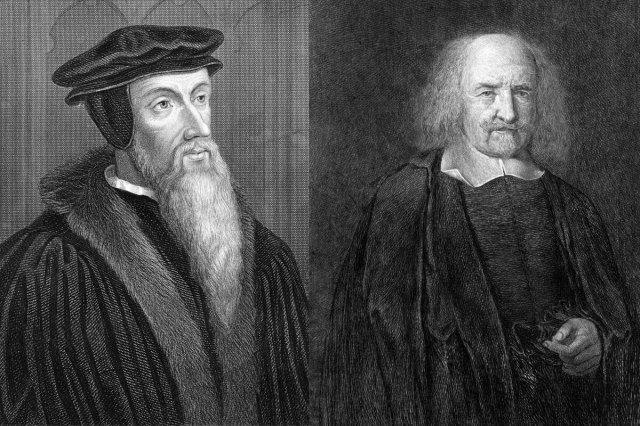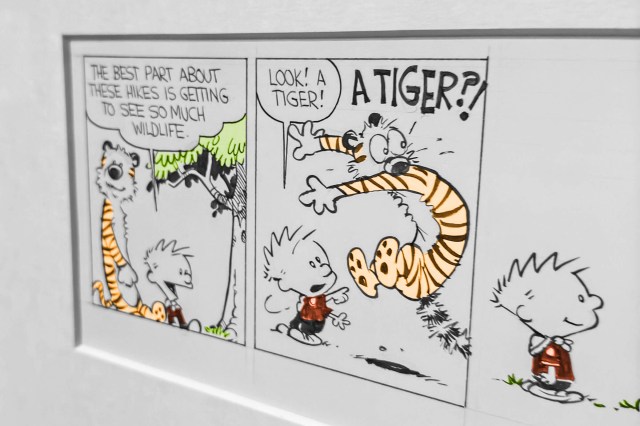
Calvin and Hobbes Were Named After Historical Figures
Calvin and Hobbes were both named after heavyweight historical figures. Calvin was named after John Calvin, the 16th-century theologian and Protestant reformer who was a principal proponent of the idea of predestination. Hobbes, meanwhile, got his name from Thomas Hobbes, a 17th-century philosopher who didn’t have the highest regard for human beings — he famously described human life without governance as “solitary, poor, nasty, brutish, and short.” Watterson was very deliberate in naming his two protagonists, with both monikers reflecting the more complex and philosophical side of Calvin and Hobbes.

The Creator Eschewed Merchandising
In our merch-obsessed world, Calvin and Hobbes was a surprisingly and uncommonly defiant exception to the norm. Watterson strongly resisted the commercialization of his creation, believing it would cheapen the artistic integrity of the strip. So, unlike many popular comic strips (and almost every other beloved brand in modern pop culture), Calvin and Hobbes has no official merchandise beyond the comics and associated books. Watterson famously turned down lucrative licensing deals, including offers for animated adaptations and plush toys, which could have potentially made him hundreds of millions of dollars.

Calvin Has Numerous Alter Egos
Throughout the history of the comic strip, Calvin creates various alter egos for himself. Some of these are generic personas that appear only fleetingly, while others are fully fleshed-out characters who went on to make multiple appearances. Some of the most prominent alter egos include Stupendous Man (a superhero who only ever achieves moral victories), Tracer Bullet (a hard-boiled detective who often comes to the wrong conclusion), and his most iconic alter ego, Spaceman Spiff (a spaceman who flies around the galaxy and achieves some actual victories). Other alter egos included dinosaurs, monsters, Calvin the Bold, Captain Napalm, and The Incredibly Annoying Human Echo.
More Interesting Reads

The Inspiration for Hobbes Came From the Author’s Own Cat
The character of Hobbes was at least partially inspired by Watterson’s cat, a gray tabby named Sprite. Sprite provided the long body and facial characteristics of Hobbes, as well as his personality and mannerisms. According to Watterson, Sprite was “good-natured, intelligent, friendly, and enthusiastic in a sneaking-up-and-pouncing sort of way.”

Hobbes Was a Figment of Calvin’s Imagination — Or Was He?
One of the most fun and intriguing aspects of Calvin and Hobbes is the ambiguous nature of Hobbes’ existence. To Calvin, Hobbes is very much alive — a walking, talking tiger who is his best friend and partner in crime. However, to everyone else in the strip, including Calvin’s parents, Hobbes appears as nothing more than a stuffed toy. The natural assumption, therefore, is that Hobbes is simply an imaginary friend. That, however, is up for debate, and Watterson leaves it up to the reader to decide for themselves. Watterson himself, when asked about Hobbes’ imaginary status, replied, “The strip doesn’t assert that. That’s the assumption that adults make because nobody else sees him, sees Hobbes, in the way that Calvin does … Hobbes is more real than I suspect any kid would dream up.”

The Final Farewell Strip Has a Fittingly Uplifting Ending
The final Calvin and Hobbes strip was published on December 31, 1995. After a decade, Watterson decided it was time to bring the comic to a conclusion, even though the comic was still at the height of its popularity. The last-ever strip shows Calvin and Hobbes walking across a snowy landscape, at which point Calvin declares, “It’s a magical world, Hobbes, ol’ buddy … Let’s go exploring!” The two friends then ride away on their sled, into their joyous wintry world. The inspiring ending reinforced the comic strip’s central message that the world is a magical place with plenty to discover and explore, as long as we embrace imagination and our sense of adventure.











